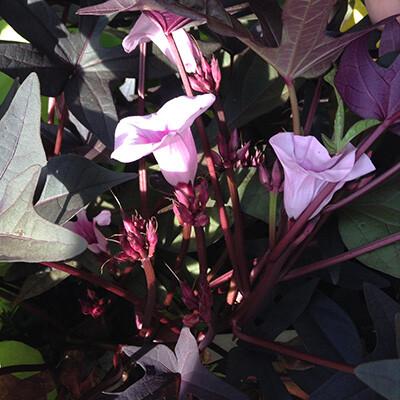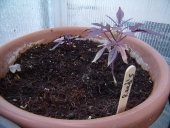
 34
34




 3
3








Some places need to be wild

 3
3




Argue for your limitations and they are yours forever.




Western Montana gardener and botanist in zone 6a according to 2012 zone update.
Gardening on lakebed sediments with 7 inch silty clay loam topsoil, 7 inch clay accumulation layer underneath, have added sand in places.
 6
6




Nothing ruins a neighborhood like paved roads and water lines.




 4
4




 3
3




 2
2




 4
4





 3
3




It is a privilege to live, work and play in the traditional territory of the Salish People.
Now drop and give me 52... ~ Come Join the permies Shoecamp! ~ All about Permies, including Tutorials ---
Twenty bucks off the homesteading bundle for the next 72 hours!
 9
9




 2
2




 5
5




Nothing ruins a neighborhood like paved roads and water lines.
 10
10









Nothing ruins a neighborhood like paved roads and water lines.
 3
3




 4
4








yet another victim of Obsessive Weeding Disorder
 12
12




Nothing ruins a neighborhood like paved roads and water lines.










Other people may reject you but if you lie in the forest floor for long enough the moss and fungi will accept you as one of their own!
 9
9




Nothing ruins a neighborhood like paved roads and water lines.
 8
8




Nothing ruins a neighborhood like paved roads and water lines.
 3
3




New location. Zone 6b, acid soil, 30+ inches of water per year.
https://growingmodernlandraces.thinkific.com/?ref=b1de16
Growingmodernlandraces.com affiliate
 2
2




Nothing ruins a neighborhood like paved roads and water lines.




New location. Zone 6b, acid soil, 30+ inches of water per year.
https://growingmodernlandraces.thinkific.com/?ref=b1de16
Growingmodernlandraces.com affiliate
 2
2




With appropriate microbes, minerals and organic matter, there is no need for pesticides or herbicides.
 9
9




Nothing ruins a neighborhood like paved roads and water lines.
 4
4




 1
1




Nothing ruins a neighborhood like paved roads and water lines.




The greens are talked about, here and there. In this particular case, though, it's not about greens. It's about seeds. I'm aware that the greens are edible, but first I need to get them to actually grow and thrive here, which means growing from seed and adapting them to my environment.Alder Burns wrote:Just about every thread I see on here and elsewhere about sweet potatoes neglects to mention this fact, and I haven't seen it here yet either, though I admit I read through it pretty quickly. EAT THE GREENS!! They are wonderful briefly cooked up and used any way one would use spinach; while having the advantage of growing through the long hot summer, unlike most other greens except for tougher things like collards and a few other uncommon tropicals. You can regularly prune the tips and cook them stem and all, and this can help keep the vines a bit more controlled especially in a small garden. I think I read somewhere you can pick about 20% of the leaves without affecting the yield of the roots. This tidbit raises their value in a subsistence system quite significantly....
New location. Zone 6b, acid soil, 30+ inches of water per year.
https://growingmodernlandraces.thinkific.com/?ref=b1de16
Growingmodernlandraces.com affiliate
 2
2




New location. Zone 6b, acid soil, 30+ inches of water per year.
https://growingmodernlandraces.thinkific.com/?ref=b1de16
Growingmodernlandraces.com affiliate
 3
3




Nothing ruins a neighborhood like paved roads and water lines.












 3
3




Argue for your limitations and they are yours forever.
 3
3




Gardens in my mind never need water
Castles in the air never have a wet basement
Well made buildings are fractal -- equally intelligent design at every level of detail.
Bright sparks remind others that they too can dance
What I am looking for is looking for me too!

 1
1




The only thing...more expensive than education is ignorance.~Ben Franklin
 8
8




Nothing ruins a neighborhood like paved roads and water lines.
 8
8




Nothing ruins a neighborhood like paved roads and water lines.
 11
11




Nothing ruins a neighborhood like paved roads and water lines.

|
So you made a portal in time and started grabbing people. This tiny ad thinks that's rude:
12 DVDs bundle
https://permies.com/wiki/269050/DVDs-bundle
|








